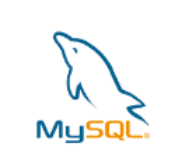Data is everywhere, from the price of items at your local supermarket to the personal data that social media collects when you browse. Our world is built on data, and SQL makes navigating this data far easier.
SQL stands for Structured Query Language. SQL is used to communicate with a database. It is widely accepted that SQL is the standard language for relational database management systems. SQL statements are used to perform tasks such as updating data on a database or retrieving data from a database. Some common relational database management systems that use SQL are Oracle, Sybase, Microsoft SQL Server, Microsoft Access, etc. It facilitates retrieving specific information from databases that are further used for analysis. Even when the analysis is being done on another platform like Python or R, SQL would be needed to extract the data that you need from a company’s database.
It uses sets of keywords to retrieve data from databases, these keywords are called statements. Let’s take a look at some of the statements available in SQL.
If you were to navigate a large database without SQL, it would take a significantly longer time to find the data you need. By using the SELECT statement, you can select data by table and column types. This way, you can instantly pinpoint data sets that meet all requirements of your search rather than spending a lot of time searching manually.
The INSERT statement allows you to add new information to the tables. Similarly, to the SELECT statement, you can choose multiple columns to input your data into.
The DELETE statement does exactly what it sounds like: it allows you to delete existing records within a table. A DELETE query also allows you to specify rows that should be deleted that match specific conditions.
Learning SQL will open up opportunities in a range of different careers and will vastly boost future job prospects once you become competent in SQL and all its variants.
If you are interested in learning SQL then check out our Data Analytics course HERE!






